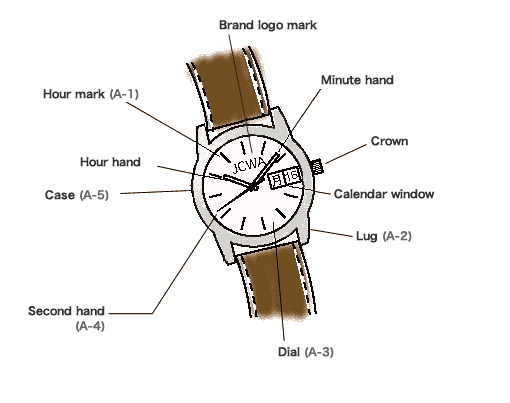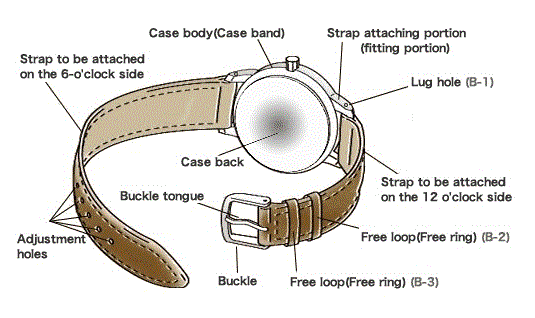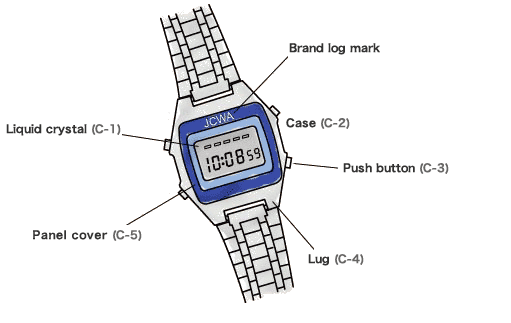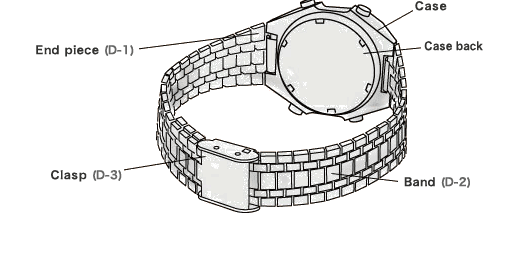What are the part names of watches?
An example of a typical analog watch with a leather strap

| (A-1) | Hour mark Line or dot used as gradation for the hours. |
|---|---|
| (A-2) | Lug Part attaching the case to the band. Metal bands integrated to the watch are called integral bands. |
| (A-3) | Dial The face of the watch that shows the hour markers. |
| (A-4) | Second hand Some watches do not have a second hand. When a watch has the second hand connected to the center, as shown in the figure, it is called a center second watch. |
| (A-5) | Case (side) Part that includes the crystal, the bezel, the case body, and the back of the case. The mechanical parts inside the case are often called movement. |

| (B-1) | Lug hole Hole where to insert the spring bar. The spring bar is used when installing the band. |
|---|---|
| (B-2) | Free loop Same use as the fixed loop. This loop can move along the band. |
| (B-3) | Fixed loop Loop used to fasten the excess portion of band section attached to the six o'clock side. It is fixed to the band. |
An example of a digital watch with a metallic band

| (C-1) | LCD panel Panel that digitally displays the time, calendar and other functions. This part corresponds to the dial on analog watches. |
|---|---|
| (C-2) | Case Part that includes the crystal, the case body and the back of the case. The parts inside the case are often called module. |
| (C-3) | Push button Button that can be pushed to set the time, the calendar, and other functions. The watch in the figure shows four buttons. |
| (C-4) | Lug Part attaching the case to the band. |
| (C-5) | Panel cover This part covers the display section and determines the panel view. Generally, it includes indications and marks for time display. |

| (D-1) | End piece Piece at the end of a metal bracelet that attaches to the case. It is also called end link. |
|---|---|
| (D-2) | Band Metal bands are also called bracelets. |
| (D-3) | Buckle Part used to attach the two sections of the band. Some buckles allow the user to adjust the length of the band. |